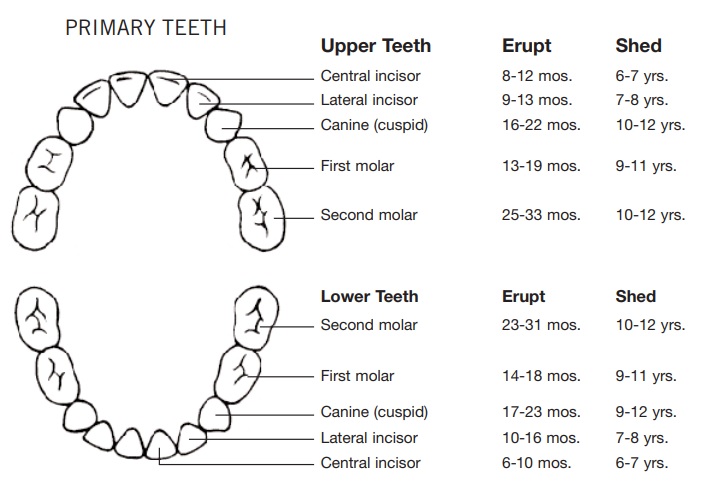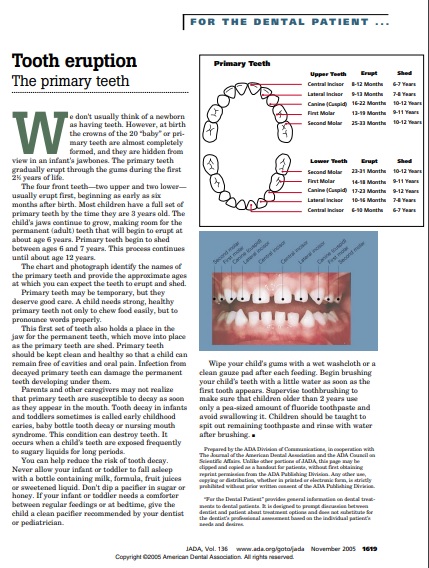There are many milestones that parents look forward in a baby’s first year of existence. The baby’s first tooth or teeth emergence is one of them. Parents must be prepared for this development. Crying, irritability, low-grade temperature, and reduced appetite for solid food are the main symptoms of it.
That’s why, you should make use of baby teething charts to identify when the baby’s first teeth are likely to emerge. With the help of chart, you can also determine the order in which the rest of the teeth will emerge. In this way, during transition phases, parents can provide care to the baby.
Table of Contents
Understanding baby teething chart:
The baby teething chart is an important chart that indicates the type of teeth, position in the mouth, and emergence and fall out period (age). Babies ordinarily have 20 deciduous (primary) teeth. The ten teeth are present on the lower jaw and the other ten on the upper jaw. Central incisors, lateral incisors, first molars, canines, and second molars are the different types of teeth.As the baby grows up to the age of 3, deciduous teeth will systematically erupt. The upper or lower incisors ordinarily will be the first to emerge. After that, the lateral incisors, then first molars, and then canines are emerged.
Until all the deciduous teeth have erupted, the different types of teeth will emerge in pairs, one on each side of the upper or lower jaw. Then, the teeth start falling out at around the age of six (6) to make way for the baby’s permanent teeth. You may also like the chore chart template.
Deciduous teeth
Deciduous teeth are also known as primary teeth. They are the first set of teeth to appear in a baby’s mouth. In a baby’s mouth, the emergence of teeth is in pairs. Within the same jaw, one tooth appears on the right and the other tooth appears on the left. Moreover, teeth eruption on either jaw starts with the emergence of the central incisors. A baby teething chart provides an approximate age of teeth eruption not the exact.The emergence of deciduous teeth starts with the eruption of the bottom central incisors, then the upper central incisors, then followed by the upper lateral incisor, and the lower lateral incisors. As per the teething chart, it isn’t uncommon in babies that before the lower lateral incisors, the first molars emerge.
Permanent teeth
Permanent teeth start to emerge when the baby sheds the teeth. The first molars of babies as per the teething chart will generally be the first set of teeth to emerge with or before the central incisors followed by the lower canines. Then, they are followed by the first and second premolars and/or upper canines. The emergence of second and third molars finalizes the permanent teeth development pattern. Thus, an individual should all the 32 teeth by the age of 21.Tips to follow:
The parents should make aim to keep the teeth of their children free from cavities and other dental-related issues. For this, follow the below tips;- Usage of plain pacifier
- Brush regularly
- Avoid sugary foods
- Avoid using bottles
- Don’t use utensils
- Use fluoride toothpaste
- See dentist










![Free Project Brief Template [Word+PDF]](https://exceltmp.com/wp-content/uploads/2021/03/printable-project-brief-template-150x150.jpg)


